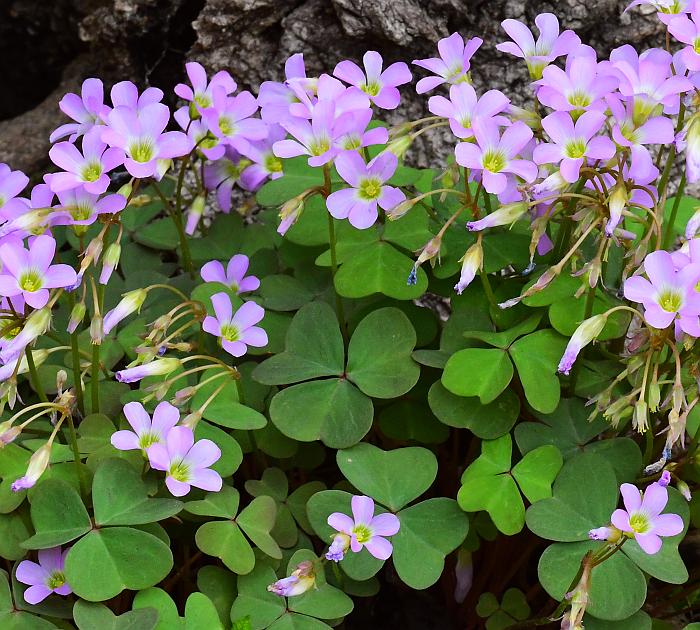Oxalis violacea L.
Violet Wood Sorrel

Native
CC = 5
CW = 5
MOC = 86
© SRTurner
Oxalis violacea L.Violet Wood Sorrel | |
 |
Native CC = 5 CW = 5 MOC = 86 |
© SRTurner |
|
Family - Oxalidaceae Habit - Perennial forb, with scaly, ovoid, brown or pinkish-tinged bulbs, occasionally with inconspicuous stolons. Stems - Aerial stems absent.
Leaves - Basal, long-petiolate. Petioles glabrous to densely pubescent, with stipules near the base as inconspicuous, translucent wings of tissue. Leaves palmately trifoliate. Leaflets to 20 mm long, broadly obcordate, apical notched to 1/3 of the total length, the upper surface glabrous, green and often reddish- to purplish markings, the undersurface glabrous or sparsely pubescent, green but usually mottled to strongly tinged with purplish red, the leaflet base sometimes with scattered, stiff, unicellular, nonglandular hairs.
Inflorescence - Umbellate clusters of 4-16 flowers, arising from bulb.
Flowers - Sepals 4-6 mm long, oblong-lanceolate, usually with 2 bright orange thickenings (concentrations of oxalate crystals) at the tip. Petals 9-20 mm long, pink, violet, or purple, rarely white. Corollas often with greenish throats.
Fruits - Fruits 4-6 mm long, oblong-ellipsoid, glabrous. Seeds 1.0-1.5 mm long, brown, the surface somewhat wrinkled or with a faint network of ridges.
Flowering - March - May, again in September - November. Habitat - Forest openings, savannas, glades, prairies, pastures. Origin - Native to the U.S. Lookalikes - None. Other info. - This attractive species can be found throughout most of Missouri, as well as across the eastern half of the continental U.S. The plant is easy to identify because of its bulb-like stem, three-parted leaves (often with purplish markings), and its pink flowers. Photographs taken at Shaw Nature Reserve, Franklin County, MO, 4-22-2007, Engelmann Woods Natural Area, Franklin County, MO, 4-12-2010 and 4-19-2014, Glassberg Conservation Area, Jefferson County, MO, 4-04-2016, Danville Conservation Area, Montgomery County, MO, 5-15-2018, and along the Katy Trail near Dutzow, Warren County, MO, 4-22-2022 (SRTurner). |